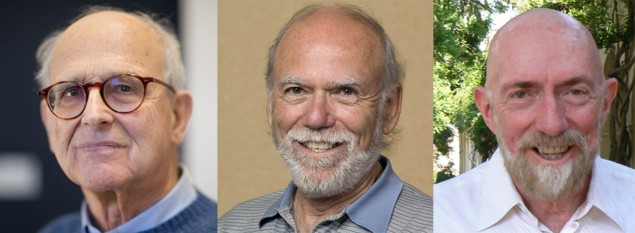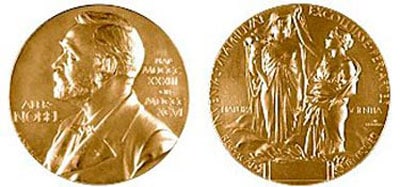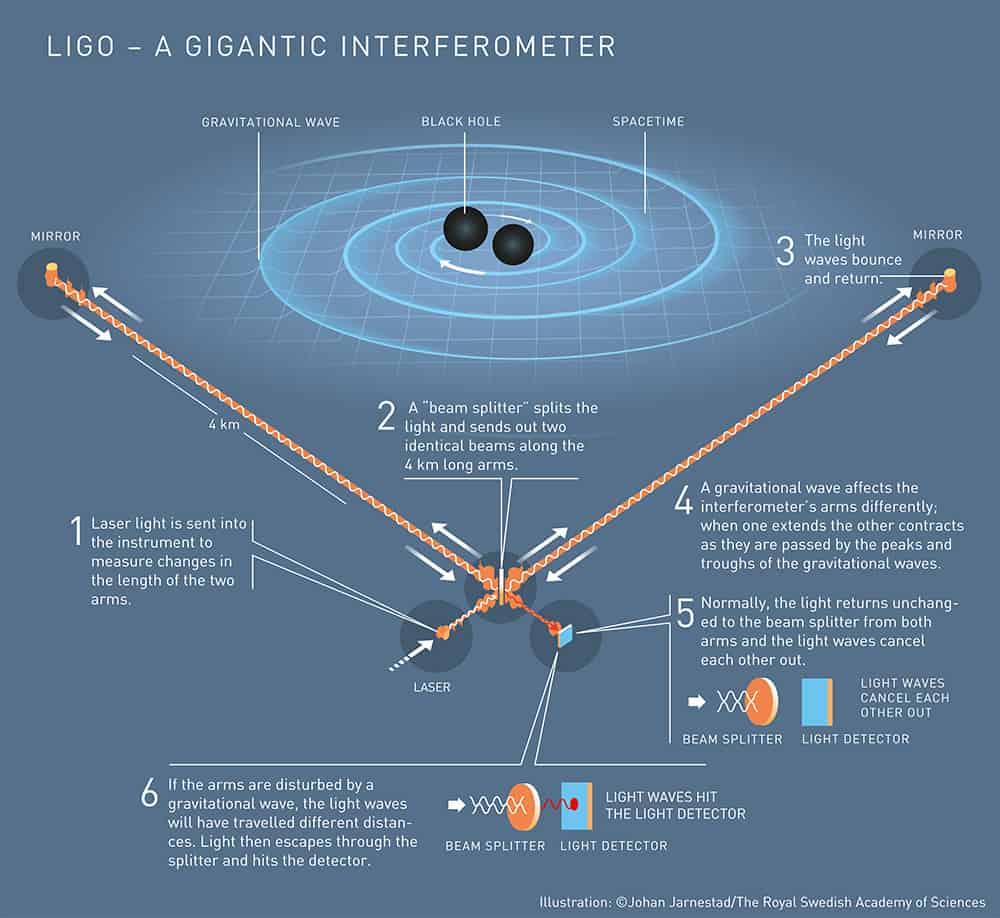
The 2017 Nobel Prize for Physics has been awarded to Rainer Weiss, Barry Barish and Kip Thorne for decisive contributions to the LIGO detector and the observation of gravitational waves. The winners will receive their medals at a ceremony in Stockholm on 10 December.
The prize is worth SEK 9m (£823,000). One half of the prize goes to Weiss. Barish and Thorne have equal shares of the second half of the prize.
In February 2016 Weiss, Barish, Thorne and colleagues working on the Laser Interferometer Gravitational-wave Observatory (LIGO) in the US announced that they had made the first direct detection of gravitational waves. The observation was made in September 2015 and the gravitational waves had been created by the merger of two distant black holes.
A similar event was swiftly detected in December of that year and announced in June 2016. A third event was seen in January 2017 and just last week LIGO physicists announced that they had detected their fourth black-hole merger, this time in conjunction with the Virgo gravitational-wave detector in Italy.
Fully clothed
“I even have clothing on,” quipped US-based Weiss on an early-morning telephone call to Sweden shortly after the winners were announced. He said that the prize recognizes the work of thousands of people who worked on LIGO. “At first, we failed but slowly we got things to work,” he said.
When asked about the first detection by LIGO he said “Many of us didn’t believe it. It took us two months to convince ourselves that we had detected a gravitational wave.”

Weiss said he is looking forward to the detection of gravitational waves from supernovae and merging neutron stars by LIGO and Virgo. He also said that the next generation of gravitational-wave detectors could provide important clues about the early universe.
LIGO comprises two 4 km-long interferometers – one in Hanford, Washington and the other in Livingston, Louisiana (see above video). Each instrument can measure extremely small changes in distance along the interferometer arms that occur when a gravitational wave passes through Earth.
Weiss played a crucial role in designing and building LIGO. He was born in Berlin in 1932 and fled Germany with his family in 1939, settling in New York City. He studied physics at the Massachusetts Institute of Technology (MIT), where he gained a PhD in 1962. After a brief stint at Princeton, Weiss returned to MIT where he started an experimental group that focused on gravitation and cosmology.
Barish became the principal investigator of LIGO in 1994 and was named director of the observatory in 1997. He was born in 1936 in Omaha, Nebraska. He did a BA in physics and PhD in experimental high-energy physics at the University of California, Berkeley. He joined Caltech in 1963. He is Ronald and Maxine Linde Professor of Physics, Emeritus at Caltech.
Thorne was a co-founder of LIGO and did important calculations that showed how gravitational waves would be picked up by the detectors. Born in 1940 in Logan, Utah, Thorne studied physics at Caltech and then moved to Princeton University to complete a PhD in 1965. He then returned to Caltech, where he is now Feynman Professor of Theoretical Physics, Emeritus. Thorne’s research has focused on theoretical astrophysics and relativity.

LIGO’s (and lately Virgo’s) success has opened a new window into the universe by ushering in the era of gravitational-wave astronomy. There is also the potential for multimessenger astronomy, whereby telescopes are pointed at the source of a gravitational wave to detect electromagnetic radiation emitted by the source. While no such radiation has been seen from the four black-hole mergers, events involving neutron stars and other astronomical objects are expected to be picked up by telescopes.
Accelerating masses
First predicted by Albert Einstein’s general theory of relativity, gravitational waves are ripples in the fabric of space–time that are generated by accelerating masses. Since the theory was published a century ago, Thorne and other physicists have predicted that binary-star or binary-black-hole systems would be prolific sources of gravitational waves.
In the above video, researchers from the LIGO collaboration, based at Cardiff University in the UK, talk about the history of gravitational waves, how LIGO’s interferometers work, the new era of gravitational-wave astronomy and what it was like finding out about their pivotal first observations.
You can read about Physics World’s visit to the LIGO detector in Livingston, Louisiana in “The great detector”.
- Additional reporting for this article was provided by Tushna Commissariat, reviews and careers editor of Physics World.



